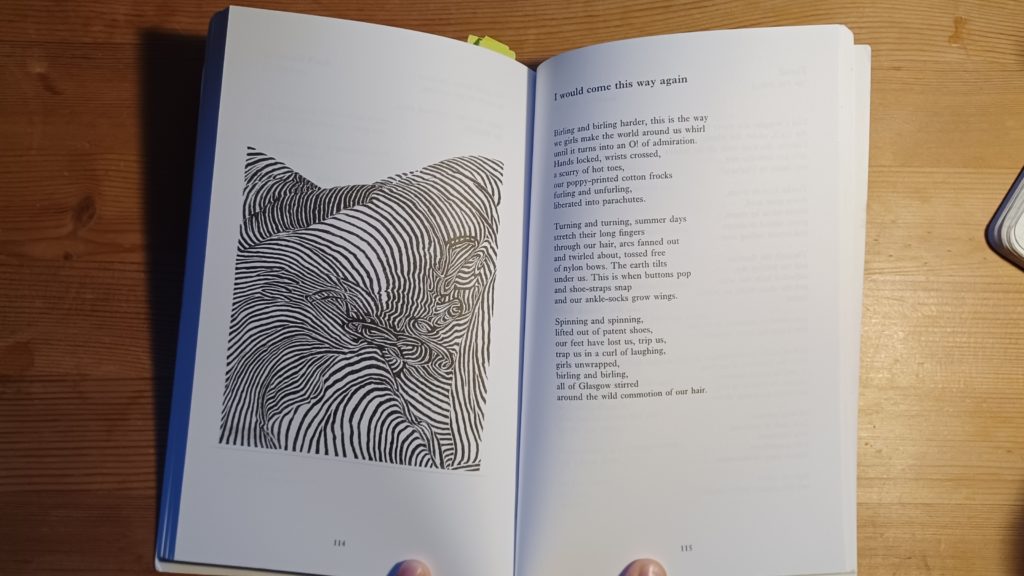
This poem and its accompanying image are from the collection The Terrorist at My Table by Imtiaz Dharker (Bloodaxe Books, 2006). Dharker is an established visual artist as well as a poet, and all of her Bloodaxe collections include her distinctive illustrations throughout. While I am considering this single poem alongside the image on its facing page, it is worth noting that Dharker’s books do not strictly pair poem and image in a one-for-one relationship in the way that other illustrated poetry collections do (eg. Jamie McKendrick’s The Years). Instead, the illustrations are included in amongst the poems and many poems in Dharker’s collections are not preceded or followed by an image. However, the placement of this poem and image on facing pages does invite a reading of them together through the design of the book itself, and we can assume that careful consideration was given to the placement of the images within the book, and that therefore it is worthwhile considering the effect of reading the image and the poem together.
Dharker’s drawing, made up of a series of long, curved pen strokes in parallel that create the impression of three dimensional forms, suggests an undulating surface that is simultaneously figurative yet also abstract enough to invite multiple interpretations. Many of the images in the book depict flowing cloth, and in particular women in traditional Indian dress, and similarly this image can be seen as a body under striped cloth, with the suggestion of a limb, possibly a leg, bent at a right angle. There is also, through the flowing lines of the image, the suggestion of a landscape, and it is these two readings of the image that are brought together in the poem.
The poem, through its title ‘I would come this way again’, already suggests a journey, an act of passing through, which echoes the landscape-like elements of the image. Throughout the poem, both clothing and the land itself are mentioned several times, tying these two aspects of the image together. But there is another very close reflection of the poem in the image, that of the ‘Birling and birling’ which opens the poem. This sense of motion, the spinning of the girls in the poem, is the central theme of the text and is signalled at the beginning of each new stanza. This spinning is echoed by the swirls formed on the right of the image, which are distinctive to this particular drawing in the collection.
As elements and themes of the poem are reflected and emphasised in the drawing, this has the effect of communicating how these ideas interrelate. The speaker of the poem sees the Glasgow scene around her transformed by the swirling action and the carefree joy of the girls, and we see in the image not the urban setting of the poem, but a fluid, flowing landscape that suggests the result of that transformation.